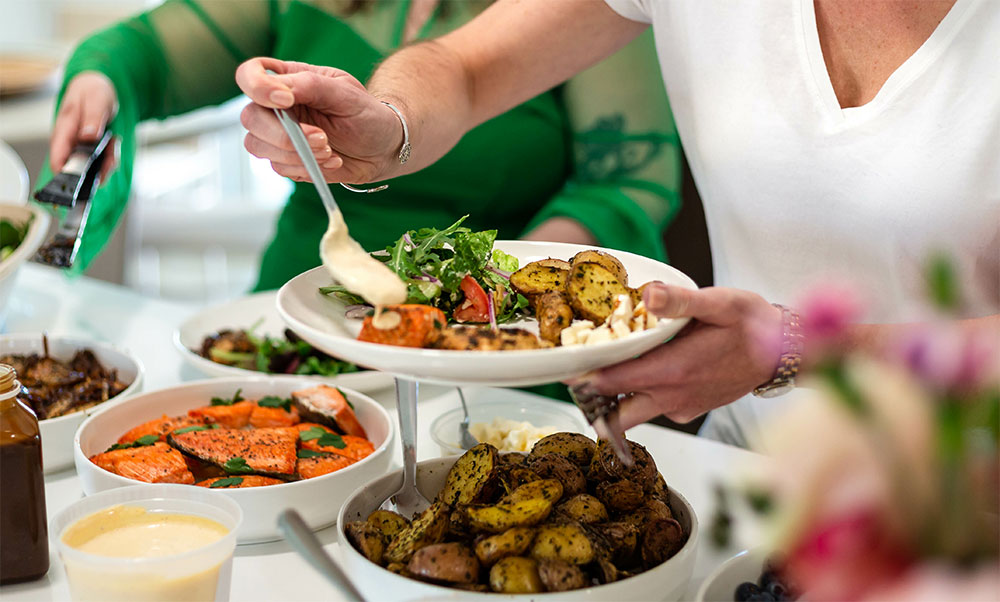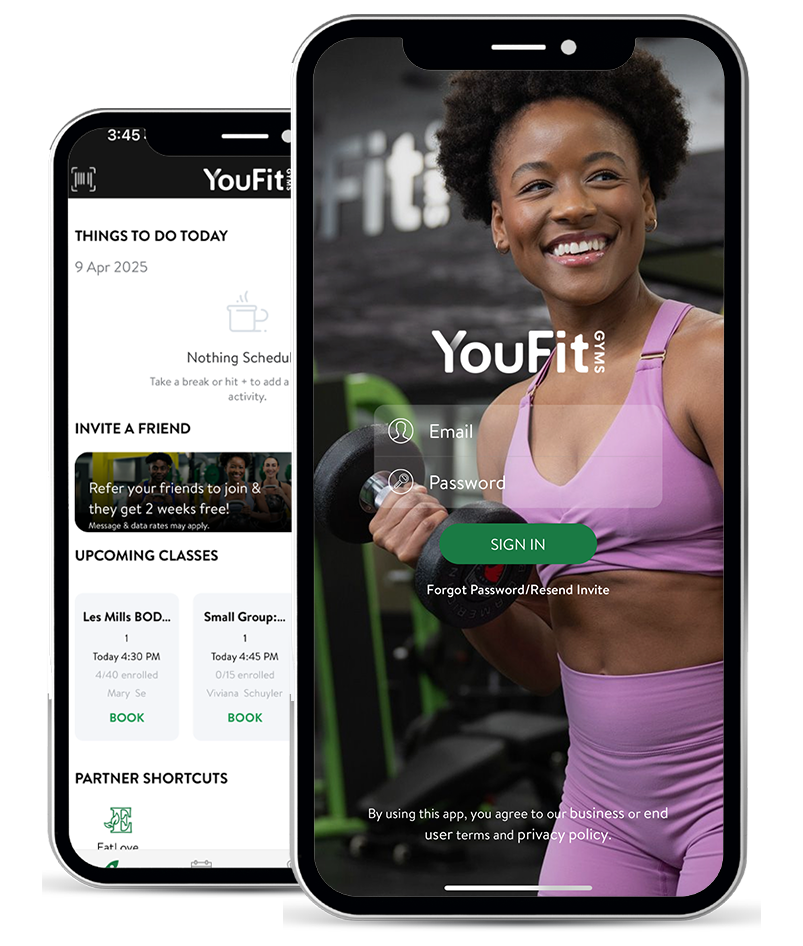Look out, MyPlate and get alllll the way out of the building, food pyramid. The plate method is here, and research shows that it might help manage weight a lot better. That’s because the plate method is a simple tool to help guide what you eat, and how much, from one meal to the next. Spoiler alert: it’s a lot of veggies! Most of us have a hazy idea that eating “more vegetables” will make us healthier, but what does that really mean? How many vegetables? What else can – or should – we add to meals? And above all, how can eating all these vegetables not sound like food jail? Don’t worry! We’ve got everything covered, and it’s going to be delicious. Read on.
What is the Plate Method?
The plate method is a simple way to divide the kinds of food that make a healthy diet. The main idea is packing in as much protein and other healthy nutrients without adding on extra calories. The plate method follows a ratio that looks like this:
- ½ non-starchy vegetables (examples: broccoli, carrots, leafy greens, peas and more)
- ¼ lean protein (examples: tofu, chicken, white fish, beans and so on)
- ¼ starchy vegetables or grains (examples: sweet potatoes, quinoa, brown rice, whole wheat bread)
The plate method was developed using a combination of national food guidelines, including MyPlate, with modifications to help those with plant-based diets.
How to balance your plate and manage your weight
Here is where you can get creative. Non-starchy vegetables make up half the meal, so we’ll start there.
Non-starchy vegetables
Half of your plate should be filled with any combination of non-starchy vegetables. This category of veggies has fewer calories than high starch veggies (like a baked potato), while also packing more fiber and other essential nutrients into every bite. That’s what makes non-starchy vegetables so good for weight management. Here are 15 of the most common:
- Asparagus
- Broccoli
- Brussels sprouts
- Carrots
- Cabbage
- Cauliflower
- Cucumber
- Kale
- Green beans
- Lettuce (romaine, endive, even iceberg)
- Mushrooms
- Peppers
- Sugar snap peas
- Tomatoes
- Zucchini
Lean proteins
Again, the perks of lean proteins include maximizing nutrients while taking in fewer calories than you would eating high-fat meats. Picture a chicken breast with around 43 grams of protein and 235 calories versus a burger that clocks in at 20 grams of protein and 350 calories. Choose the chicken and you’re likely to feel more full for longer, all while taking in fewer calories. That’s key to weight management.
Here are 10 easy to find lean protein sources:
- White fish (cod, haddock, grouper, halibut, tilapia, and bass)
- Nuts
- Plain Greek yogurt
- Beans and lentils
- Skinless white meat chicken and turkey
- Low-fat cottage cheese
- Tofu
- 90% lean beef
- Edamame
- Egg whites
Starchy vegetables and grains
The final quarter of your plate is starchy vegetables and grains. These foods are high in complex carbs, which give you energy while keeping those blood sugar levels stable. Some examples are:
- Pasta
- Rice
- Tortilla
- Berries
- Cereal
- Popcorn
- Apple
- Orange
- Potato
- Whole-wheat bread
What do meals look like using the plate method?
Use a nine-inch or smaller plate, to better help keep portions small. Then start by loading up your non-starchy foods first, filling in with proteins and starchy foods next. Here is what that could look like.
Breakfast:
- Non-starchy vegetables: spinach and tomatoes
- Whole grains or starchy vegetables: strawberries
- Proteins: egg whites and turkey bacon
Use a combination of these building blocks to create an egg white omelet with spinach, tomatoes and turkey bacon served with a side of fresh berries. Weight management can be absolutely delicious!
Lunch
- Non-starchy vegetables: sweet potato, cauliflower, cabbage, avocado
- Whole grains or starchy vegetables: brown rice
- Proteins: chicken and almonds
Grain bowls make a delicious lunch and bonus, you can prep all the ingredients ahead of time. Start with a fist-sized portion of brown rice. Add the same amount of chicken breast then smother it all with roasted sweet potatoes and cauliflower. Slice some fresh cabbage for crunch and you’ve got a gorgeous meal. For added flavor and healthy fats, add a spoonful of hummus and a sprinkle of almonds.
Dinner
- Non-starchy vegetables: lettuce, asparagus, bell peppers, carrots, spinach
- Whole grains or starchy vegetables: quinoa, whole wheat pasta
- Proteins: tofu
A big salad makes such a good meal! Load up a plate with any type of lettuce you like, plus baby spinach, shredded carrots, diced bell peppers and chopped asparagus. Layer cooked quinoa and whole wheat pasta on top and sprinkle oven-roasted tofu on over everything. Spritz with the juice of half a lemon and a drizzle of extra virgin olive oil, plus salt and pepper.
Benefits of adding vegetables to every meal
Vegetables are simply packed with nutritional elements that can work wonders: fiber to make you feel satisfied, iron to give you more energy, plus vitamins and minerals to keep your eyes sharp, your brain feeling good and make your whole body less susceptible to cancer. And they can do all that while bringing in the bare minimum of calories, contributing to weight management and more importantly, an overall healthy lifestyle.
Are frozen vegetables good for you?
Yes! Frozen vegetables are not only picked at the height of freshness, they’re also prepped (meaning peeled, sliced, chopped, cleaned, etc.) and frozen into very handy little bags that patiently wait in the freezer for you to use them. Plus, frozen vegetables can be incredible. Did you know that you can roast cauliflower straight out of the bag? Or make broccoli soup in the same way? Saute spinach with a little garlic for the side dish of everyone’s dreams in 10 minutes? You don’t even have to thaw these veggies. Just start cooking.
YouFit is committed to making your health and fitness dreams come true, one meal at a time. In fact, our partners at EatLove can help!










